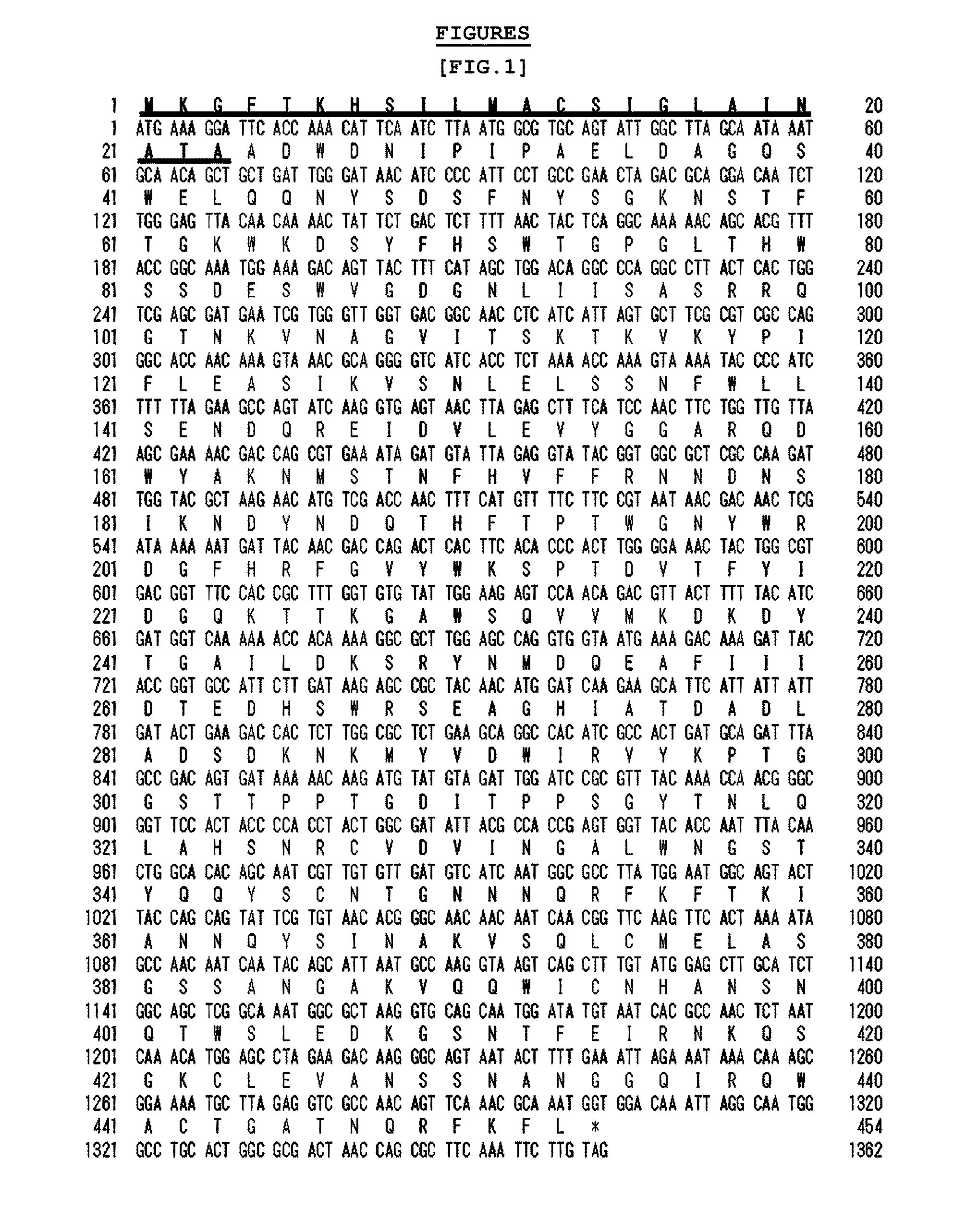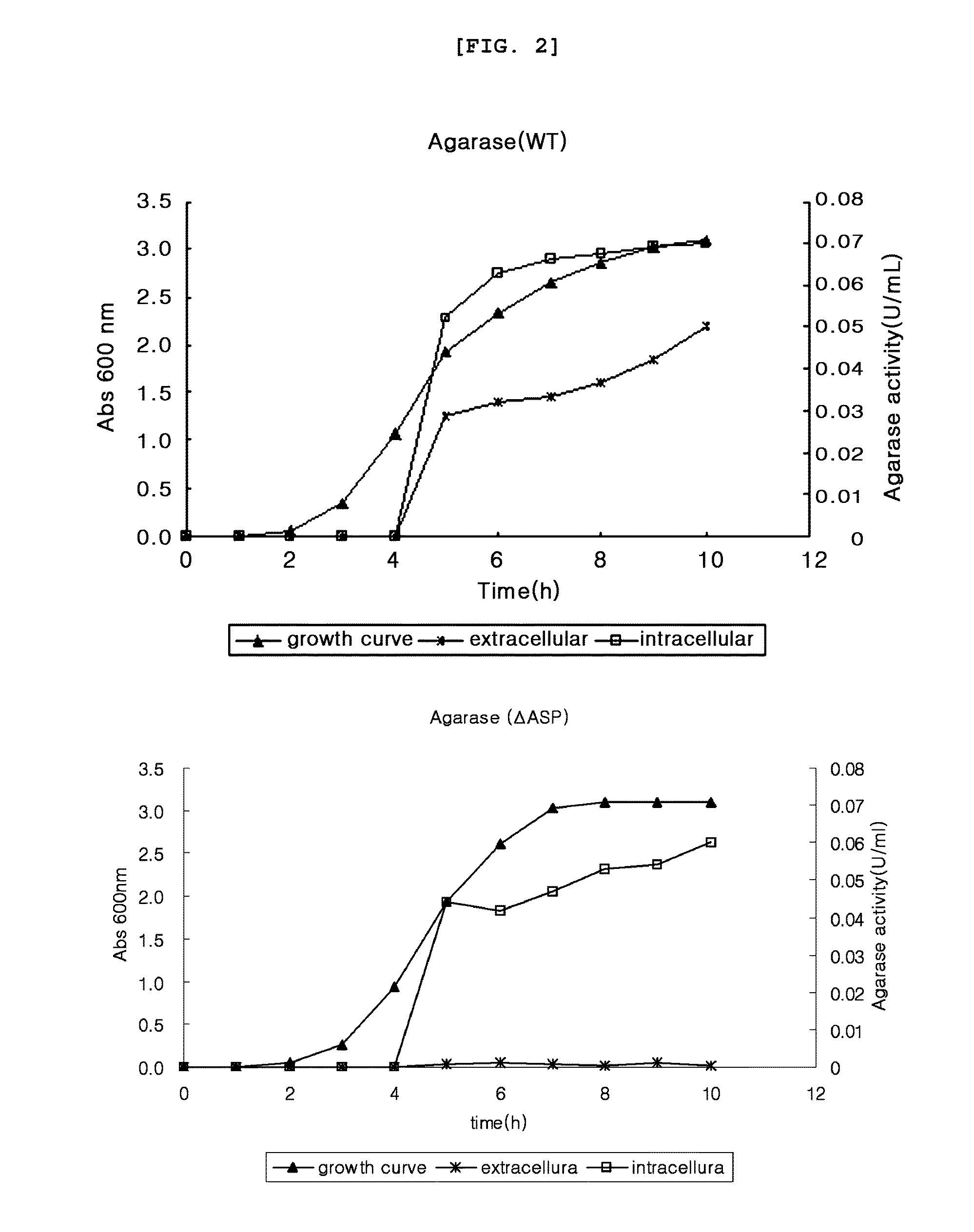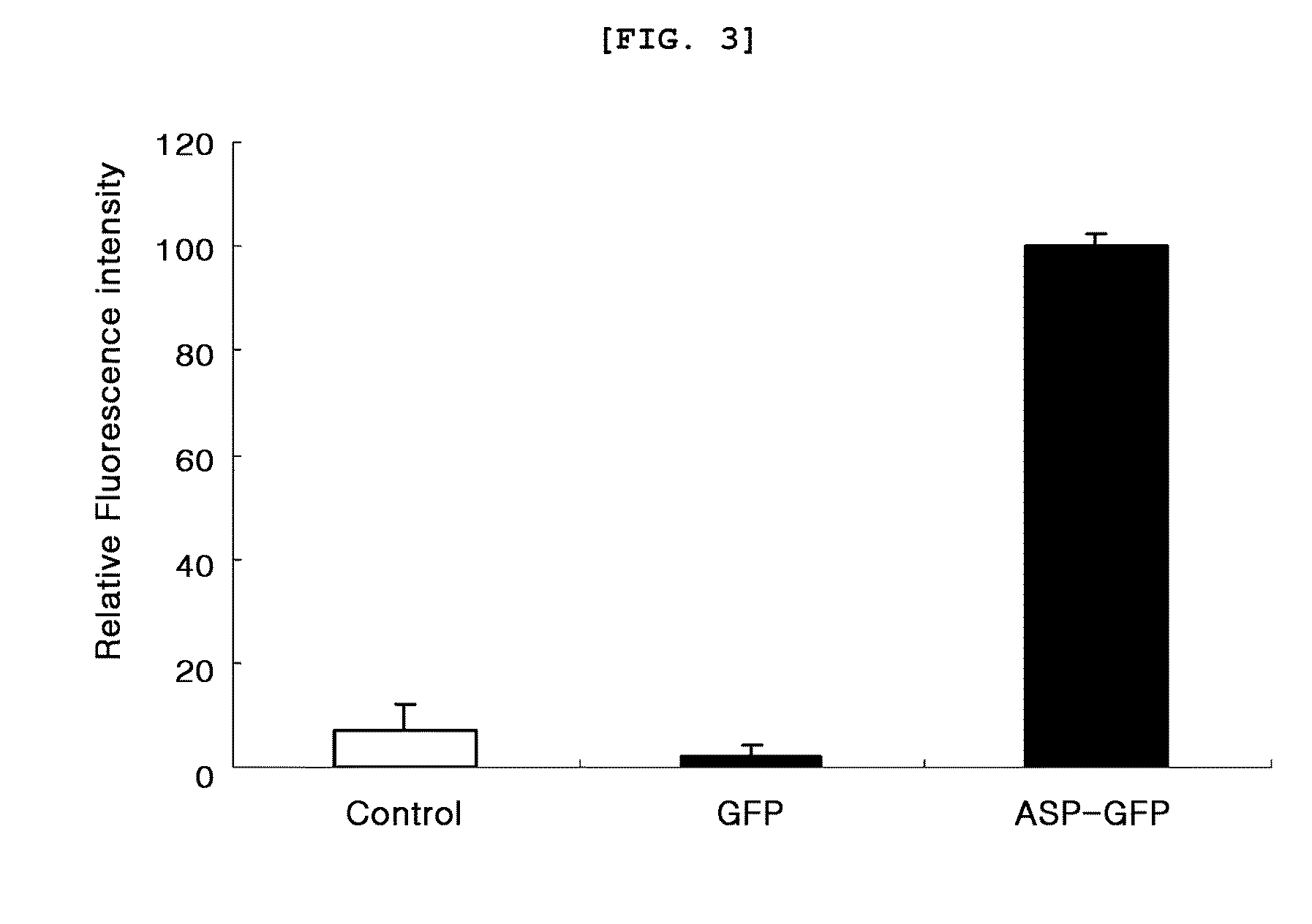Method for the secretory production of heterologous protein in escherichia coli
a technology of heterologous protein and escherichia coli, which is applied in the field of signal sequence peptide, can solve the problems of difficult protein secretion in culture medium, and achieve the effect of improving the secretion efficiency of target recombinant protein
- Summary
- Abstract
- Description
- Claims
- Application Information
AI Technical Summary
Benefits of technology
Problems solved by technology
Method used
Image
Examples
example 1
Construction of Expression Vector
Prediction of Signal Sequence Peptide in Agarase
[0058]The signal sequence presumed to correspond to 23 amino acid residues (SEQ. ID. NO. 3) at N-terminal of the agarase gene beta-agarase AgaB34 (Gene Bank Accession NO. EU200967; nts SEQ. ID. NO. 1, aa SEQ. ID. NO. 2) separated from the marine microorganism Agarivorans albus YKW-34 was named herein as ‘agarase signal peptide (ASP)’.
Agarase Signal Peptide Deleted Expression Vector
[0059]The expression vector pET23b-agarase (WT) to express the said ASP and agarase as a fusion protein and the expression vector pET23b-agarase (ΔASP) to express agarase alone without ASP were constructed. Then, agarose secretion was investigated in E. coli in the presence or absence of ASP.
[0060]1) Particularly, AgaB34 gene (pUSS1, Fu et al., J. Microbiol. Biotechnol, 2008) was used as a PCR template to construct the vectors pET23b-agarase (WT) and pET23b-agarase (ΔASP). To construct pET23b-agarase (WT), ASP-Agar_F_Nde I (...
example 2
Measurement of Agarase Activity
[0068]Agarase enzyme activity was measured by colorimetry measuring reducing sugar. Particularly, the substrate, 0.1% agarose solution, was put in a 1.5 Ml tube by 400 μl, to which the supernatant obtained from pET23b-agarase (WT) and pET23b-agarase (ΔASP) of example 1 and the intracellular protein sample were added by 100 μl each, followed by inducing enzyme reaction with shaking at 37° C. Upon completion of the enzyme reaction, 500 μl of dinitrosalicylic acid (DNS) solution reacting with reducing sugar was added thereto, followed by boiling at 100° C. for 5 minutes. The tube stayed in ice water for 15 minutes. OD575 was measured and the result was compared with the D-galactose standard curve to calculate agarase enzyme activity. 1 unit of agarase enzyme activity was defined by the enzyme amount that could produce 1 μmol of D-galactose.
[0069]As a result, as shown in FIG. 2, the extracellular agarose secretion was high in the presence of ASP, while the...
example 3
Measurement of Fluorescence
[0070]200 μl of each pET23b-ASP, pET23b-ASP-GFP and pET23b-GFP culture solution prepared in example 1 was loaded in a 96-well microplate. Fluorescence of the sample was measured with a multi-microplate reader (Synergy™ HT Multi-Mode Microplate reader, Biotek, USA). At that time, excitation wavelength was 485 nm and emission wavelength was 528 nm. As a result, as shown in FIG. 3, the extracellular secretion of GFP was confirmed to be very high when GFP was fused with ASP.
PUM
| Property | Measurement | Unit |
|---|---|---|
| Fraction | aaaaa | aaaaa |
| Fraction | aaaaa | aaaaa |
| Fraction | aaaaa | aaaaa |
Abstract
Description
Claims
Application Information
 Login to View More
Login to View More - R&D
- Intellectual Property
- Life Sciences
- Materials
- Tech Scout
- Unparalleled Data Quality
- Higher Quality Content
- 60% Fewer Hallucinations
Browse by: Latest US Patents, China's latest patents, Technical Efficacy Thesaurus, Application Domain, Technology Topic, Popular Technical Reports.
© 2025 PatSnap. All rights reserved.Legal|Privacy policy|Modern Slavery Act Transparency Statement|Sitemap|About US| Contact US: help@patsnap.com



